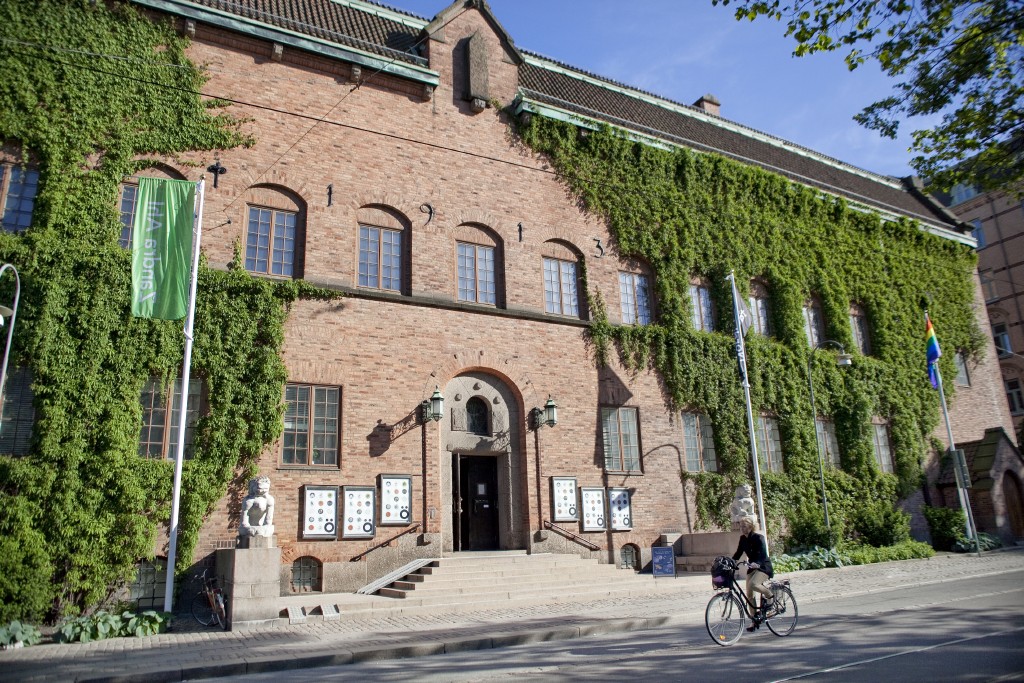- Home ›
- Sweden ›
- Gothenburg
Röhsska Museum

Thematic highlights include Chinese arts and crafts, Japanese design, and a donation of gold and silver pieces received by the museum in 1934(Falk Simons silversamling). Part of the museum permanently displays a representative cross-section of the extensive collections. In addition, there are regularly changing exhibitions on various thematic focuses in the field of design, also drawing on exhibits from other museums.
Design is everywhere!
New central exhibition is Inspiration East Asia, which explores the influence of East Asian craftsmanship on contemporary Nordic design. In addition to the exhibitions in the approximately 20 halls and rooms, which also includes light and sound installations, the house problematizes the tension between design and society in various lectures and accompanying events. The central message of the museum describes with the slogandesignis everywhere the realization that design extends far beyond the design of everyday objects. With posters, packaging, lettering, pictograms and much more, designers determine our everyday lives, usually imperceptibly but decisively.
How it all began: Lots of luxury. Hardly any taste.
World cities such as London had long since had the Victoria & Albert Museum (since 1852); Nordic capitals such as Helsinki with the Taideteollisuusmuseo (1874) and Copenhagen with the Design Museum (1890) were already presenting collections of arts and crafts - and Swedish efforts to raise the general public's awareness and taste for style and design were also on the move.
In the 1880s, the idea for a permanent exhibition building emerged in Gothenburg when the Gnistan (The Spark) Society organized its first exhibitions of pieces from private collections. The idea itself came from the chamberlain, author and amateur archaeologist Wilhelm Berg (1839-1915), the secretary of Gnistan. Berg was less than enthusiastic about the tastes of his fellow Gothenburgers; overloaded pieces were used solely for representation and were unquestioningly mixed with cheap mass-produced items to form still ensembles. His verdict: "V" The establishment of the museum was made possible by private donations, first and foremost by the estate of the brothers Wilhelm and August Röhss, who had made their money at home and abroad. The sum bequeathed by them made possible the construction of the museum and the acquisition of the basic stock of the collection.
Famous museum building by Carl Westmann
The nationwide architectural competition for the building was won in 1910 by the Swedish architect Carl Westmann (1866-1936). The museum building, in the style of Swedish National Romanticism, was constructed of hand-painted brick, which was intended to refer to the centuries-old tradition of Swedish building and to indicate its vitality through its ornamentation. The first exhibitions were held while the building was still under construction.
The building for the Röhsska Museum is one of Westmann's most important works. Much better known, however, is a building he designed only a little later: the Stockholm City Hall (Stadshuset).
The museum's collections
Soon the pieces of a Japan collection were added; in 1912/13 the botanist Thorild Wullf was sent on a buying trip to China at museum expense. The resulting collection of chinoiseries is one of the largest and most important found in European museums today, due in no small part to the fact that Wullf arrived in China just as the last emperor abdicated there. The general chaos of the upheaval and the resulting unrest was used by Wulff, who was not very well educated in art matters but was very skilful, to assemble a considerable collection. The museum opened in 1916.
Museum awards prize for Nordic design
Since 1994, the museum has annually awarded the Torsten och Wanja Söderbergs pris for outstanding Nordic design, the world's most valuable design award with a sum of one million Swedish kronor. The award winners are given the opportunity to present their works in the rooms of the Röhsska.